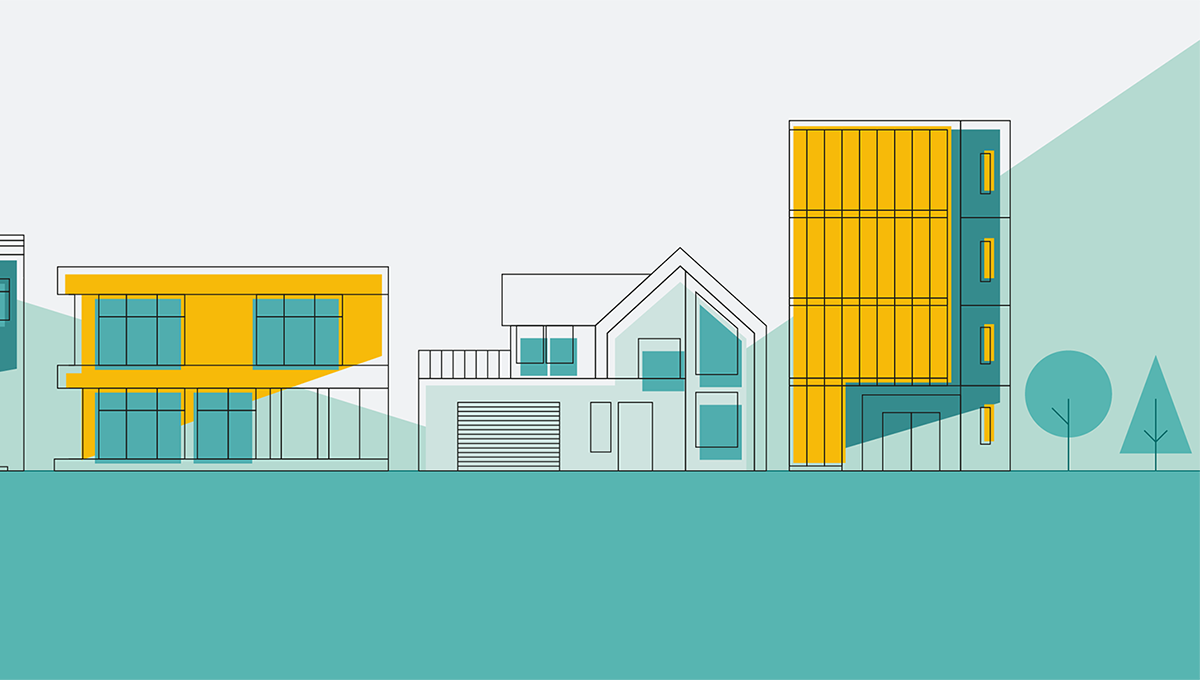Everyone wants to live in a safe, affordable, high-quality home. Local Digital is at the early stages of a project to transform the social housing sector, and a significant part of that plan involves exploring the data challenges faced by the social housing sector and the way that data is used.

Local Digital has set out its long term strategy, centred around five outcomes:
- build a social housing data community
- find a sector ownership model for social housing data standards
- prioritise and develop / refine data standards
- design services to support the adoption of standards
- define the value and case for change.
There is one invaluable, straightforward catalyst that can greatly accelerate this plan and help this community to achieve its aims - the Unique Property Reference Number (UPRN).
It's the granular, property-level detail that's needed in a dataset to make data analysis and sharing more reliable, and reporting more effective. Originating from local authorities, there are over 41.5 million UPRNs, covering every addressable location across the UK, this includes sub-divisions of blocks of flats. As the LGA says:
“The Unique Property Reference Number – the unique identifier for every addressable location – is key to almost everything that’s delivered or achieved by councils.
The UPRN should be fundamental to all data matching and, therefore, to all data analysis. This would ensure that disparate data sets and innovative applications of data can be blended to provide insight and understanding about residents and businesses, which is needed to deliver area-based services effectively on the ground. Every authority has common focal points, such as housing, education, welfare and highways. When the UPRN is added to each siloed department’s data, the whole organisation benefits. It becomes a much simpler exercise to link inter-departmental information.”
Already, the UPRN is a mandatory inclusion for organisations in the public sector. In April 2020, the Open Standards Board mandated that the UPRN is the public sector standard for referencing and sharing property information. This means that the UPRN must be used when identifying geographic locations in Great Britain.
It is also important to note that UPRNs are the property identifier which is part of the BS7666 standard for addressing and underpins the Local Land and Property Gazetteers held within each planning authority. The BS7666 standard has been revised several times since its inception in 1994, with the most recent revision being in 2020. The standard allows users to link different land and property identifiers (LPIs) using a common UPRN. This can help to reduce errors in data exchange and communication and make operations more efficient.
It should also be recognised that UPRNs are not considered personal data, making them a good way to identify properties while still complying with GDPR standards. We explored this in a webinar with the NHS, Information Commissioner’s Office and Central Digital and Data Office in December 2022, and in a follow-up report published by UK Authority.
The UPRN is already part of the data schema for local authority data frameworks such as the Local Digital funded Scalable Approach to Vulnerability Via Interoperability (SAVVI) and Rapid identification of vulnerable households in an emergency or crisis (VIPER).
The interoperability afforded by the UPRN is important because a social housing organisation has responsibilities to support vulnerable residents as well as maintain the properties that they live in. For example, the welfare team may want to improve their understanding of vulnerability, or the maintenance teams may want to schedule refurbishment works against specific risk protocols. All of those datasets - internal and external - can be linked with confidence, when the same UPRN appears in all of them: the inclusion of the UPRN helps users to cross-reference different data sets easily and reduce errors in data exchange and communication.
Some recent examples of this within social housing include:
- Halton Housing Association, in our case study UPRN: a golden thread for housing associations
- Hackney Council is our case study Leveraging data for better housing conditions: damp and mould management in the London Borough of Hackney
- Riverside Housing Association in a presentation at our annual conference.
Social housing is a universal need, in every local authority. Through Local Digital, local authorities, housing associations and technology suppliers will all work together to advise and create a shared vision for social housing technology and data. Every addressable location the UK has a UPRN, and by using this standard, all of those organisations will realise savings in costs, time, and resources.
In related news, the residential property sector has called on the Government to fully adopt the UPRN across the residential UK property market.




